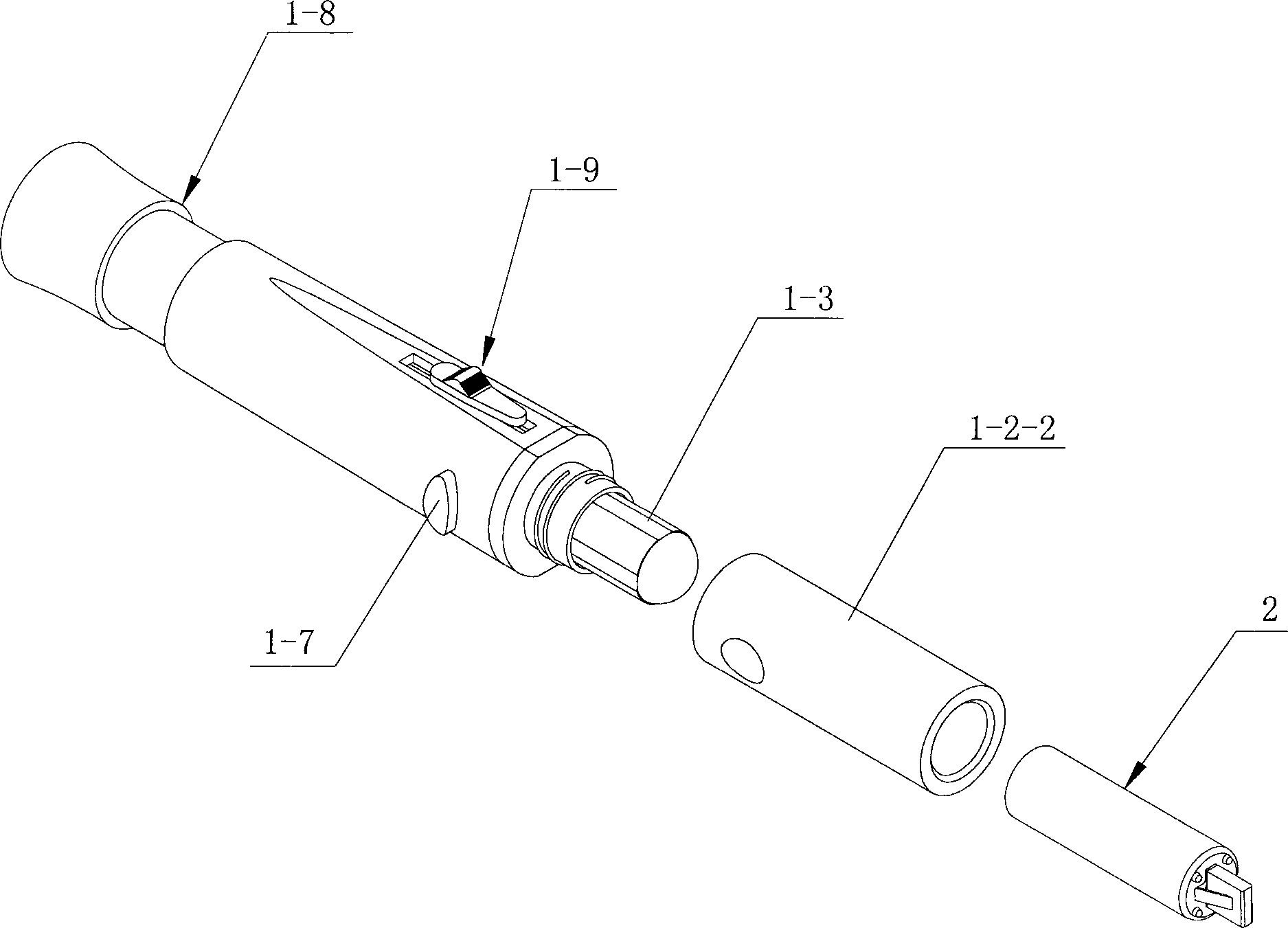The reality is that although many people of insight or enterprises have devoted a lot of energy, manpower and financial resources to this, due to their own limitations (such as those who understand medicine but do not understand industrial design, those who study industrial design On the contrary, they do not understand medicine), so that the designed products or patented design schemes have various deficiencies in one way or another, and their design schemes or products are difficult to be accepted by the market, and cannot obtain satisfactory approval from the vast majority of doctors and patients. Specific simple examples as follows:
[0005] 1. For some existing designs, the design of the main pen is too complicated, which not only increases the manufacturing cost and sales cost, but also requires the medical staff to change the familiar operating habits due to the newly added operating procedures and actions, and increases the cost. The workload of medical staff makes it difficult to be recognized by the majority of medical colleagues
[0006] 2. In some existing designs, although the disposable tip is used to solve the problem of cross-infection, the impact rod of the blood collection pen has only one spring, and the two ends of the spring are not designed to be connected and fixed, resulting in only the function of inserting the needle. There is no needle withdrawal function, so the blood collection needle cannot be withdrawn, which not only causes pain in blood collection, but also causes instinctive retraction (mainly children) due to obvious pain in the fingers of the patient, resulting in skin scratches. This is the biggest design mistake
[0007] 3. In some existing designs, in order to simplify the structure and save costs, the mainstream disposable safety blood collection device only uses a spring design method, and its two ends are connected and fixed. To realize needle withdrawal, it is necessary to use the needle-feeding inertia of the impact rod to forcibly elongate the compression spring that has entered the free state by 3-4mm (used as a tension spring) to achieve the purpose of needle insertion, and rely on the force of the elongated compression spring to elongate the needle. Natural retraction realizes the needle withdrawal function, and for the compression spring, its function is to release the kinetic energy generated after compression. When the compression spring is completely restored to the free state (length), it has completed the working mission of the compression spring , at this time, it is forced to elongate 3-4mm. After testing, the kinetic energy loss of the compression spring is very large. It can affect the speed of needle insertion by about 30%, and it is also the most important cause of obvious pain during peripheral blood collection. From the perspective of humanization, this design is the most undesirable
This design is feasible in principle, but the actual effect is not ideal after simulation tests
First, because the elastic characteristics of the elastic sheet are compared with the steel compression spring, its effective deformation is the worst. On this basis, it is limited by the diameter and length of the inner cavity of the nib jacket, and its elastic deformation will be further reduced. The needle withdrawal effect and needle insertion resistance are increased; the second is to realize the needle withdrawal function by sliding the elastic pressure piece and the V-shaped double slope, which will inevitably lead to a significant increase in frictional resistance, so that the power of useless work is significantly increased and the useful work is weakened. As a result, the needle withdrawal speed is obviously slowed down, causing the needle to stay in the skin for too long, causing severe foreign body irritation and needle withdrawal pain. This is the biggest defect of this design in the field of blood collection and needle withdrawal. Humanized design and service not suitable for painless blood collection
[0009] 5. In some existing designs, the one-time detachable nib is connected to the installation of the main pen. On the premise of no locking device, the sliding plug-in connection method is simply adopted, which is due to the lack of practical experience in this area.
However, due to the complex structure of the part of the disposable pen head, the manufacturing cost and assembly cost of its parts are relatively high, and its overall cost is close to that of some disposable safety blood collection devices.
From the perspective of one-time expenses, it has lost the practical significance of using the new blood collection pen, because once it is equipped with a special blood collection main pen and the corresponding connection and removal procedures, it is better to directly use a slightly higher priced disposable blood collection device. Come easily and quickly
[0011] In addition, due to the congenital design defect of the disposable nib, the needle body of the blood collection needle inside the nib jacket is too long, which is significantly longer than the length of the nib jacket, which will bring great difficulties to factory packaging and long-distance transportation.
Because multiple boxes are stacked on each other and under the inertial impact of vehicle bumps and brakes, no matter whether the needle body rod of the blood collection needle in the pen head is under vertical force or horizontal force, the excessively long needle body rod can be overstressed. Large, causing deformation and damage to the weak and small blood collection needles fixed on the needle body
In addition, after the blood collection of the disposable pen is completed, the needle body with the needle may slide freely in the inner cavity of the pen jacket, resulting in the exposure of the blood collection needle, which may easily cause accidental injury or environmental pollution
 Login to View More
Login to View More  Login to View More
Login to View More 


